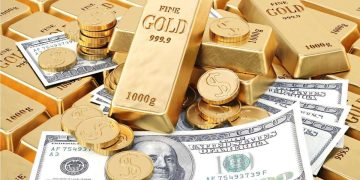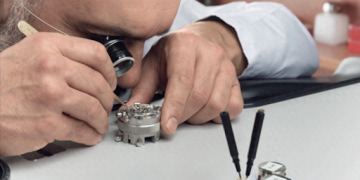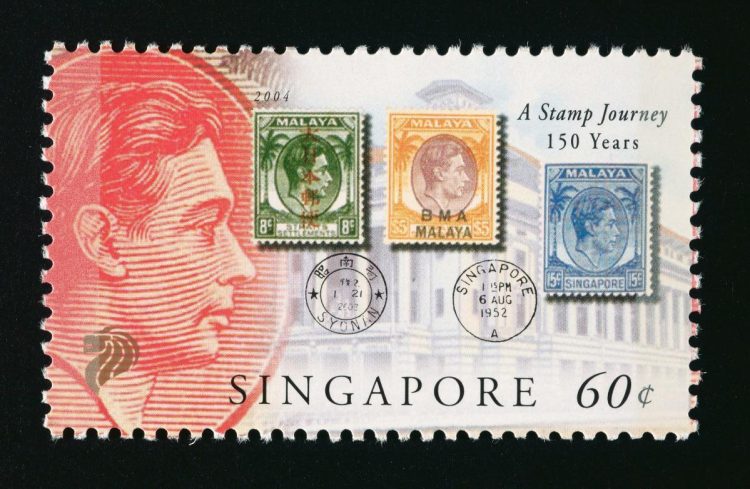Introduction
Over the last few decades, the rare coins and stamps market has undergone significant changes. What was once considered a niche interest for hobbyists has now become a global investment vehicle for collectors and investors alike. As we look to the future, several emerging trends are expected to shape the market for rare coins and stamps in the coming years. These trends are driven by technological advances, changing collector demographics, economic factors, and the evolving global marketplace.
In this article, we will examine the major future trends in the rare coins and stamps market, highlighting what collectors and investors can expect to see in the next decade.
1. Digitalization and the Rise of Online Marketplaces
In the past, the rare coins and stamps market was dominated by physical auctions and in-person trade at specialized dealers or collectors’ conventions. However, with the rise of online platforms like eBay, Heritage Auctions, and Stamp Auction Network, the market is increasingly shifting toward digital spaces. This digital transformation is expected to continue, and it could reshape how rare coins and stamps are bought, sold, and authenticated.
Key Points:
- Increased Global Access: Online platforms have made it easier for collectors and investors from around the world to access rare coins and stamps. In the past, collectors had to travel to specific regions or attend specialized auctions, but now they can participate in global auctions from the comfort of their homes. This broadens the market’s reach and increases competition for high-value items, driving prices upward.
- Online Auctions and E-Commerce: As e-commerce continues to grow, online auction platforms for rare coins and stamps are expected to become even more prominent. Auction houses are embracing livestream auctions, creating a real-time, transparent, and accessible marketplace. This trend will make the rare coins and stamps market more liquid, with quicker transactions and more dynamic pricing.
- Digitized Collections and Virtual Exhibits: Advances in digitization technologies mean that rare coins and stamps can now be displayed in high-resolution digital formats, making them accessible to a wider audience. Virtual exhibitions may become more commonplace, allowing collectors to explore collections remotely, increasing the visibility of rare items and stimulating demand.
2. The Integration of Blockchain for Provenance and Authentication
The issue of authenticity has always been a major concern in the rare coins and stamps market. Forgeries and counterfeit items can have a significant impact on the value of collectibles. However, with the integration of blockchain technology, the market is poised to experience a revolutionary shift. Blockchain can provide an immutable and transparent record of provenance and ownership, giving collectors and investors more confidence in the authenticity of the items they are purchasing.
Key Points:
- Digital Certificates of Authenticity: Blockchain can be used to create digital certificates for rare coins and stamps, which will track the entire history of an item from its creation to the present. This will ensure that buyers can easily verify the authenticity and provenance of items, reducing the risk of fraud and forgeries in the market.
- Increased Trust and Transparency: By using blockchain to store authentication data, the rare coins and stamps market will become more transparent, making it easier for buyers to trust sellers and auction houses. This transparency will be particularly important as the market continues to attract new, less experienced collectors who may be unfamiliar with the intricacies of authentication.
- Smart Contracts for Transactions: Blockchain also has the potential to streamline transactions in the rare coins and stamps market by using smart contracts. These self-executing contracts could automatically trigger payments, transfers of ownership, and delivery once specific conditions are met. This will help reduce friction in the buying and selling process, increasing market efficiency.
3. Increasing Investment in Collectibles as Alternative Assets
In times of economic uncertainty, many investors look for alternative assets that are less correlated to traditional stock markets. Over the last few years, rare coins and stamps have become increasingly popular as investment vehicles, as they offer potential for both aesthetic enjoyment and financial returns. This trend is expected to continue as more investors turn to tangible, long-term assets to diversify their portfolios.
Key Points:
- Alternative Asset Class: As part of a broader trend toward tangible assets like fine art, vintage cars, and luxury watches, rare coins and stamps are increasingly being seen as stable investments. Investors are seeking high-value coins and rare stamps as a hedge against inflation and stock market volatility, which has led to higher demand and rising prices.
- Rising Popularity of Precious Metals: Coins made from precious metals such as gold, silver, and platinum have always been popular in the investment world. As global inflation rises and the price of precious metals fluctuates, demand for gold and silver coins is expected to remain strong, with new collectors and investors entering the market.
- Diversification Strategy: High-net-worth individuals are increasingly turning to rare coins and stamps as part of a diversified investment strategy. This shift could push auction prices for rare items to new heights, especially as millennials and Gen Z investors become more interested in alternative assets.
4. Demographic Shifts in the Collector Base
Historically, the rare coins and stamps market has been dominated by older generations, particularly Baby Boomers. However, younger generations are now entering the market in larger numbers, spurred by a growing interest in collecting and alternative investments. This demographic shift is expected to continue, which could lead to changes in the types of collectibles that gain value.
Key Points:
- Millennial and Gen Z Collectors: Millennials and Gen Z collectors are often drawn to rare coins and stamps due to their potential for long-term value and as a way to diversify their investment portfolios. Younger collectors may also bring new interests to the market, including an increased focus on rare and unique items that hold personal or nostalgic significance.
- Digital-First Collectors: Unlike previous generations, many younger collectors prefer to interact with the market in digital spaces. Platforms that facilitate the buying, selling, and trading of rare coins and stamps in digital formats will likely attract younger buyers who value convenience, transparency, and access to global markets.
- Shift in Collecting Preferences: Younger collectors are more likely to gravitate toward items that have a story or cultural significance. This could lead to a growing interest in commemorative or historical coins and stamps, or those associated with major global events or social movements.

5. Increased Focus on Sustainability and Ethical Sourcing
With growing concerns about the environmental and social impacts of the collectibles market, there is increasing demand for sustainability and ethical sourcing. Rare coins and stamps, especially those derived from precious metals or materials sourced through mining, are under increasing scrutiny regarding their environmental footprint.
Key Points:
- Ethical Sourcing of Materials: The rare coins market, particularly coins made from precious metals, will likely see greater demand for ethical sourcing and transparency regarding the origins of the materials. This will pressure dealers and auction houses to ensure that coins are sourced responsibly, ensuring that they are not linked to environmental degradation or unethical labor practices.
- Eco-Conscious Collectors: As younger generations, in particular, prioritize sustainability, the market for rare coins and stamps that promote environmentally friendly practices is expected to grow. Collectors may be more inclined to support dealers who follow sustainable practices and who sell items that have a lower environmental impact.
- Carbon Footprint Transparency: Auction houses and dealers may increasingly be expected to disclose the carbon footprint of their operations, including shipping and materials sourcing, as part of an overall trend toward greater environmental responsibility in the collectibles market.
6. The Continued Popularity of Commemorative and Limited Edition Items
In the world of rare coins and stamps, limited edition releases and commemorative issues often become highly coveted by collectors due to their rarity and significance. Moving forward, we can expect to see an increasing number of special edition coins and stamps being released by national mints and postal services, which will drive demand and price increases.
Key Points:
- Commemorative Coins and Stamps: Coins and stamps issued to commemorate significant events, anniversaries, or historical figures often attract a dedicated following. This trend is expected to continue, as limited-edition commemorative items are likely to gain increasing popularity among collectors and investors alike.
- The Role of National Mints: National mints and postal services will continue to release special-edition coins and stamps to celebrate key moments in history, cultural icons, and significant milestones. The scarcity of these items, coupled with their connection to national heritage, will keep them in high demand.
- Pop Culture and Niche Themes: Commemorative coins and stamps featuring pop culture themes—ranging from blockbuster movies to famous musicians or events—will likely attract attention from younger collectors, adding another layer of demand to the market.
Conclusion
The rare coins and stamps market is evolving, driven by technological advancements, demographic shifts, and changing investor preferences. Digitalization, blockchain integration, and the growing appeal of tangible assets as investments are set to transform how collectors and investors interact with the market. Additionally, as younger generations enter the market, their preferences for unique, meaningful items and digital-first interactions will shape future trends.
As we move forward, the market for rare coins and stamps will likely continue to grow, with exciting opportunities for those willing to adapt to these new trends. Whether driven by investment potential, nostalgia, or the appeal of limited-edition collectibles, the future of the rare coins and stamps market is looking brighter than ever.


















































